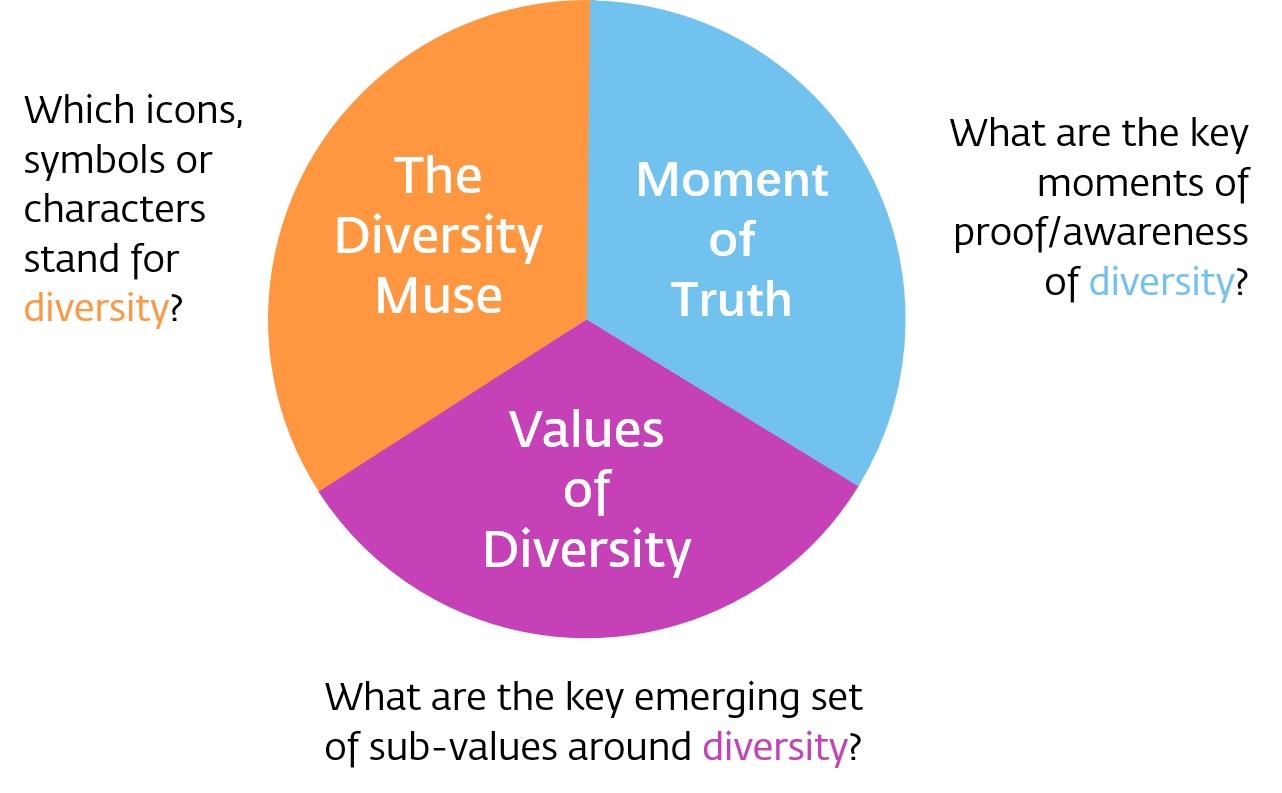

Diversity – a word that enraptures the world with equal parts trepidation and hope. Brand diversity has permeated all layers of social dialogue and corporate verticals – from HR to Marketing. Marketers have attempted to authentically converse with their target audience about diversity to varying levels of success – from brands being accused of value signaling to those who have relevantly exchanged through a universe of feeling.
Dr. Seuss comes to mind when thinking about diversity – “Why fit in when you were born to stand out”. Diversity is about enabling each person to embrace their unique stories without ever fearing exclusion; however, the specific narrative plays out very differently across product categories, brand purposes/roles and geographical context. This article aims at understanding the trajectory of diversity and providing a toolkit for brands to articulate their POV internally and externally.
Some key changes are happening within the core of the societal and individual conscience that are cascading its impact on diversity:
With the increasing fragmentation of the market in terms of diversity and also the polarity in terms of the views held by different subgroups, the power dynamics have shifted and the brands are grappling with realigning their goals and POV’s to that of their consumer.
Previous generations, the majority of them at least, have often held their views to themselves or believed in causes that have a direct impact on them. In contrast, the current Gen Z consumers have a strong POV on most social issues and are unapologetic about sharing that view and socially communicating their stand. This gives them a unique chance at truly effecting change – and brands are an integral catalyst to this process.

There was a point when diversity was one of the many CSR activities a company would focus on, but in recent years – Diversity – has trumped all other social goals in grabbing the spotlight. Now all brands HAVE to communicate their role in embracing diversity, an absence of this sub-conscious messaging is often seen as too old-fashioned/ not keeping up with the changing times.

In this context, what is most interesting is that the contextual definition of Diversity is a moving target – as the core concept and essence itself has evolved in the last 5 years, from being mostly about race to now being mostly about gender. In addition, diversity manifests itself in different avatars depending on the product category – skin color in beauty, body positivity in fast fashion, race representation in lifestyle brands, age in pharma, etc. However, in addition to this complexity, diversity communication codes don’t always travel well across categories.
Dialogue around Diversity requires:
Last holiday season, Peloton faced a lot of heat for an advert that at the outset didn’t really seem wrong. It was about a husband initiating his wife on a fitness journey. However, social media was quick to brand this advert as insensitive and tone-deaf as the wife is “thin and gorgeous” who doesn’t appear to need a Peloton in her life. It is commonly accepted that fitness is not just about weight and the narrative encompasses a lot more – to include self-esteem, self-love, acceptance, quality of life and so much more – however, why is it that consumers took to roasting Peloton so hard?

Diversity in fitness is often expressed within a unidimensional spectrum of weight and body shapes –leveraging codes around body positivity, thin, body diversity, strength, etc. Given that this is the dominating narrative within this category, Peloton showing someone who is thin and not really dimensionalizing their need or specific payoff from following a fitness regime was perceived as Peloton perpetuating existing stereotypes not just around body goals but also about gender roles and expectations.
Nike often uses athletes and protagonists who are often fit/thin, however, all their communication dimensionalizes wellness – transforming it into a narrative around grit, discipline, diligence, esteem, etc. – thereby opening up the conversation around wellness and stepping up the key communication axis beyond body shape.

Like mentioned at the start of the article, diversity is an all-pervading concept which does not live in the HR & culture practice alone anymore – it permeates all functions supporting a brand and many times has an indelible unconscious impact on seemingly unrelated aspects. This is why it is key for each brand to undertake a diversity exploration journey to internally assess and craft their POV on diversity which then becomes the foundation & guardrails of internal and external communications.
To successfully travel the path of diversity, there are a set of tools that the marketer can leverage:

1. Diversity Muse: Identifying the muse, that inspires consumers to do better and expect better, helps populate the golden standard for diversity
2. Moment of Truth: Diversity is a cultural priority which is constantly interacting with the social realities, to accurately understand it, first person anecdotal data is integral
3. Values of Diversity: Diversity is experienced and delivered through the building blocks of values – such as respect, dignity, fairness, caring, equality, self-esteem, etc.
These tools help marketers and strategists not only to have a pulse on diversity but also to use these answers to champion internal dialogues with key stakeholders on aligning on the larger goal and purpose for the brand as a whole.
A Labbrand Group Company © 2005-2024 Labbrand All rights reserved
沪ICP备17001253号-3* Will be used in accordance with our Privacy Policy
To improve your experience, we use cookies to provide social media features, offer you content that targets your particular interests, and analyse the performance of our advertising campaigns. By clicking on “Accept” you consent to all cookies. You also have the option to click “Reject” to limit the use of certain types of cookies. Please be aware that rejecting cookies may affect your website browsing experience and limit the use of some personalised features.